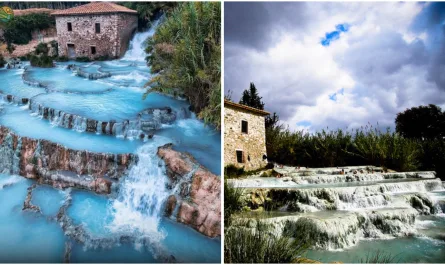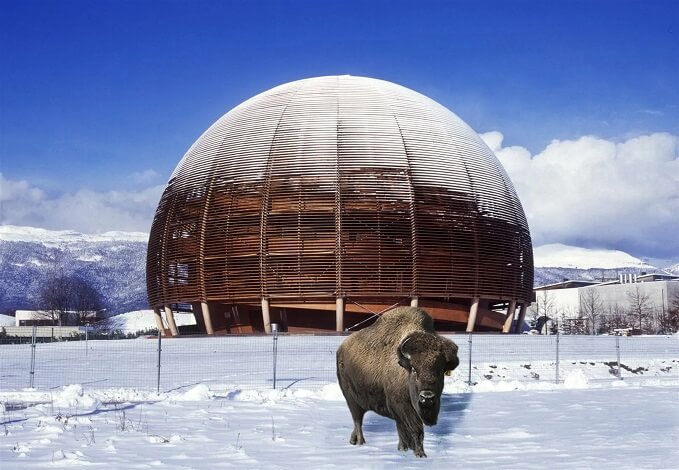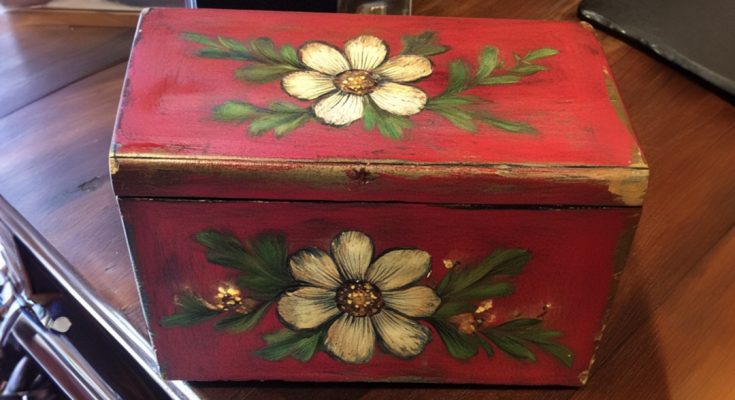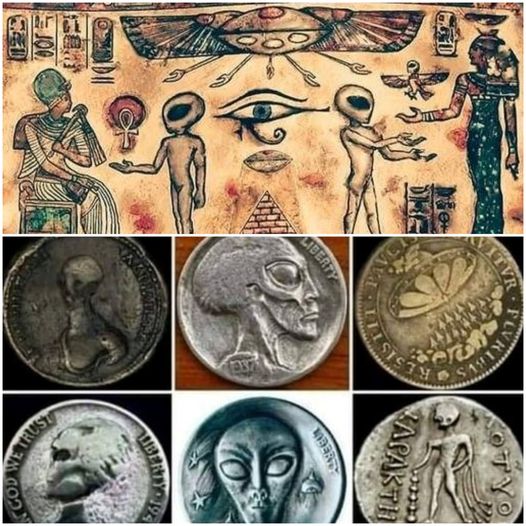In 1986, Swiss businesswoman Corinne Hofmann took a vacation to Kenya—and it changed her life forever. While traveling near Lake Turkana, she met Lketinga Leparmorijo, a striking Samburu warrior dressed in bright beads, ochre-dyed hair, and carrying a spear. What began as fascination quickly became obsession. Corinne sold her boutique in Switzerland, ended her engagement, and moved to a remote Samburu village in the arid Kenyan bush to build a life with the man she loved. But paradise came with a price. Language barriers, extreme poverty, cultural misunderstandings, and Lketinga’s growing jealousy turned their love story into a struggle for survival. After four grueling years—and the birth of their daughter Napirai—Corinne fled Kenya in secret, returning to Switzerland with her child. Her harrowing journey became the international bestseller The White Masai (1998), later adapted into a 2005 film starring Nina Hoss. As of November 16, 2025, her story remains a powerful reminder: love can cross oceans—but sometimes, it can’t bridge worlds.

The Meeting: Love at First Sight in the Bush
Corinne, then 27, was on a ferry crossing Lake Turkana with her fiancé when she first saw Lketinga standing tall among Samburu warriors. His regal posture, traditional attire, and intense gaze captivated her instantly. Despite speaking no common language, their connection was immediate. Over the next days, Corinne abandoned her travel plans to follow Lketinga to his village in Barsaloi, a remote settlement 400 km north of Nairobi.
“I had never felt anything like this before. It was as if my soul recognized his.”
— Corinne Hofmann, The White Masai
She returned to Switzerland briefly to sell her successful clothing boutique, break off her engagement, and liquidate her assets—raising $50,000 to start a new life in Kenya.

Life in the Samburu Village: From Boutique Owner to Bush Wife
In 1987, Corinne arrived in Barsaloi with dreams of building a life together. Reality hit hard:
- Housing: A windowless mud hut with a tin roof and dirt floor.
- Daily Tasks: Fetching water from a river 2 km away, cooking over open fires, hand-washing clothes.
- Culture Shock: Samburu traditions included polygamy, female genital mutilation (which Corinne refused for herself), and strict gender roles.
- Language: She learned Maa (Samburu language) slowly; misunderstandings were constant.
Despite the hardship, Corinne opened a small shop selling goods to locals—her entrepreneurial spirit adapting to the bush. In 1989, she gave birth to Napirai in a Maralal clinic after a difficult pregnancy complicated by malaria and malnutrition.
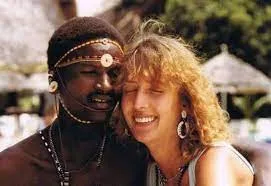
The Cracks: Jealousy, Illness, and Violence
As Napirai grew, Lketinga’s behavior changed:
- Jealousy: He accused Corinne of infidelity with customers and aid workers.
- Alcohol: He began drinking heavily, becoming aggressive.
- Cultural Clashes: He demanded she follow Samburu customs fully; she resisted practices harmful to her or Napirai.
- Health Crises: Corinne suffered repeated malaria, dysentery, and a near-fatal miscarriage.
By 1990, Lketinga’s paranoia escalated—he threatened her with a spear and locked her in the hut. Fearing for her and Napirai’s lives, Corinne planned a secret escape.
The Escape: A Mother’s Desperate Flight
In December 1990, with help from a Swiss embassy contact, Corinne fled:
- She drugged Lketinga’s tea with sleeping pills.
- She walked 12 km to a missionary post with 2-year-old Napirai.
- She was airlifted to Nairobi, then flown to Switzerland.
Lketinga never saw them again. Corinne filed for divorce in absentia.
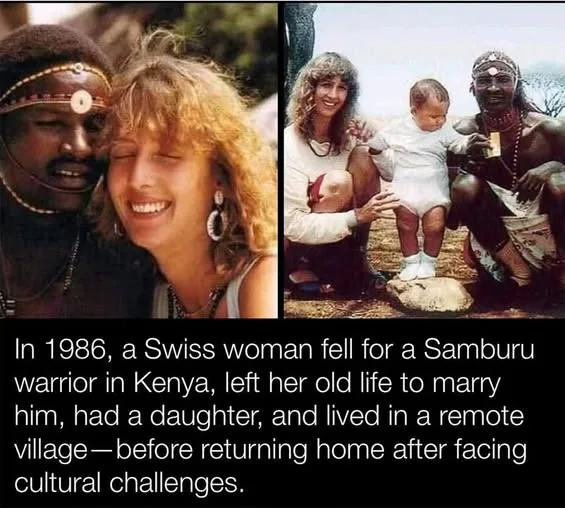
The Aftermath: Book, Film, and Legacy
Back in Switzerland, Corinne wrote The White Masai (1998), which sold 4+ million copies in 20+ languages. The 2005 film, directed by Hermine Huntgeburth, grossed $20 million. She wrote two sequels:
- Back from Africa (2003) – Rebuilding life in Switzerland.
- Reunion in Barsaloi (2005) – Returning to Kenya with Napirai.
Napirai, now in her 30s, wrote her own memoir, Napirai: My Life Between Two Worlds (2021), exploring her identity as a biracial woman raised in Switzerland.

Key Lessons from Corinne’s Journey
| Lesson | Insight |
| Love vs. Reality | Passion can blind us to cultural and practical incompatibilities. |
| Cultural Respect | Adaptation requires mutual compromise—not one-sided sacrifice. |
| Motherhood as Anchor | Corinne’s escape was driven by protecting Napirai, not abandoning love. |
| Resilience | From bush wife to bestselling author, Corinne rebuilt her life on her terms. |
Where Are They Now? (2025)
- Corinne Hofmann: Lives in Switzerland, runs a foundation for Samburu girls’ education.
- Napirai Leparmorijo: Works as a speaker and author, advocates for cross-cultural understanding.
- Lketinga: Reportedly still in Barsaloi; refused interviews since 2005.
Explore the Story
📖 Book: The White Masai (available in 20+ languages)
🎥 Film: The White Masai (2005) – [Streaming on Netflix (select regions)]
🌍 Foundation: Corinne Hofmann Stiftung
She crossed continents for love. She crossed back for life.
Corinne’s story isn’t just about a Swiss woman and a Samburu warrior.
It’s about the limits of love, the strength of survival, and the courage to choose yourself.

